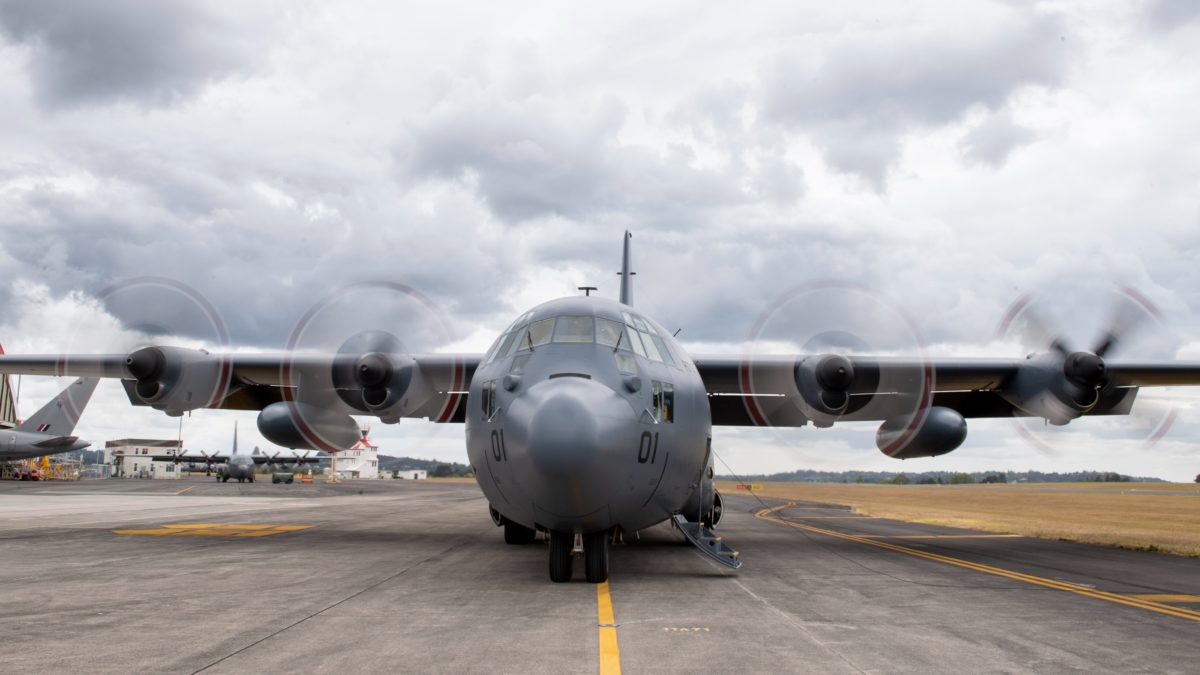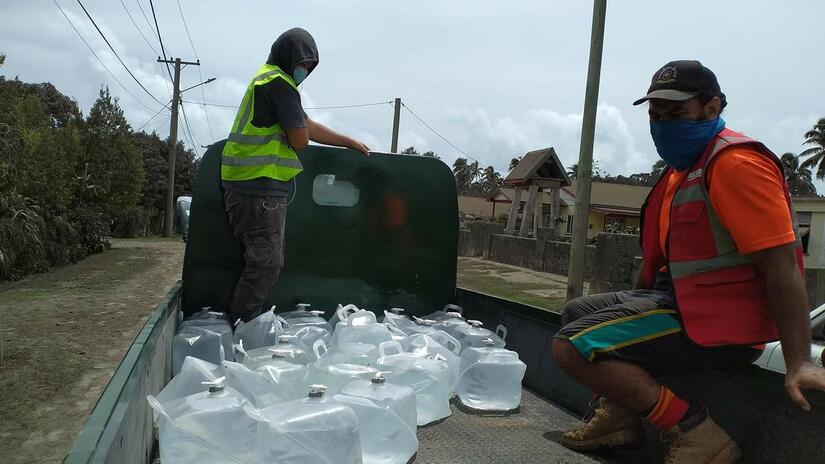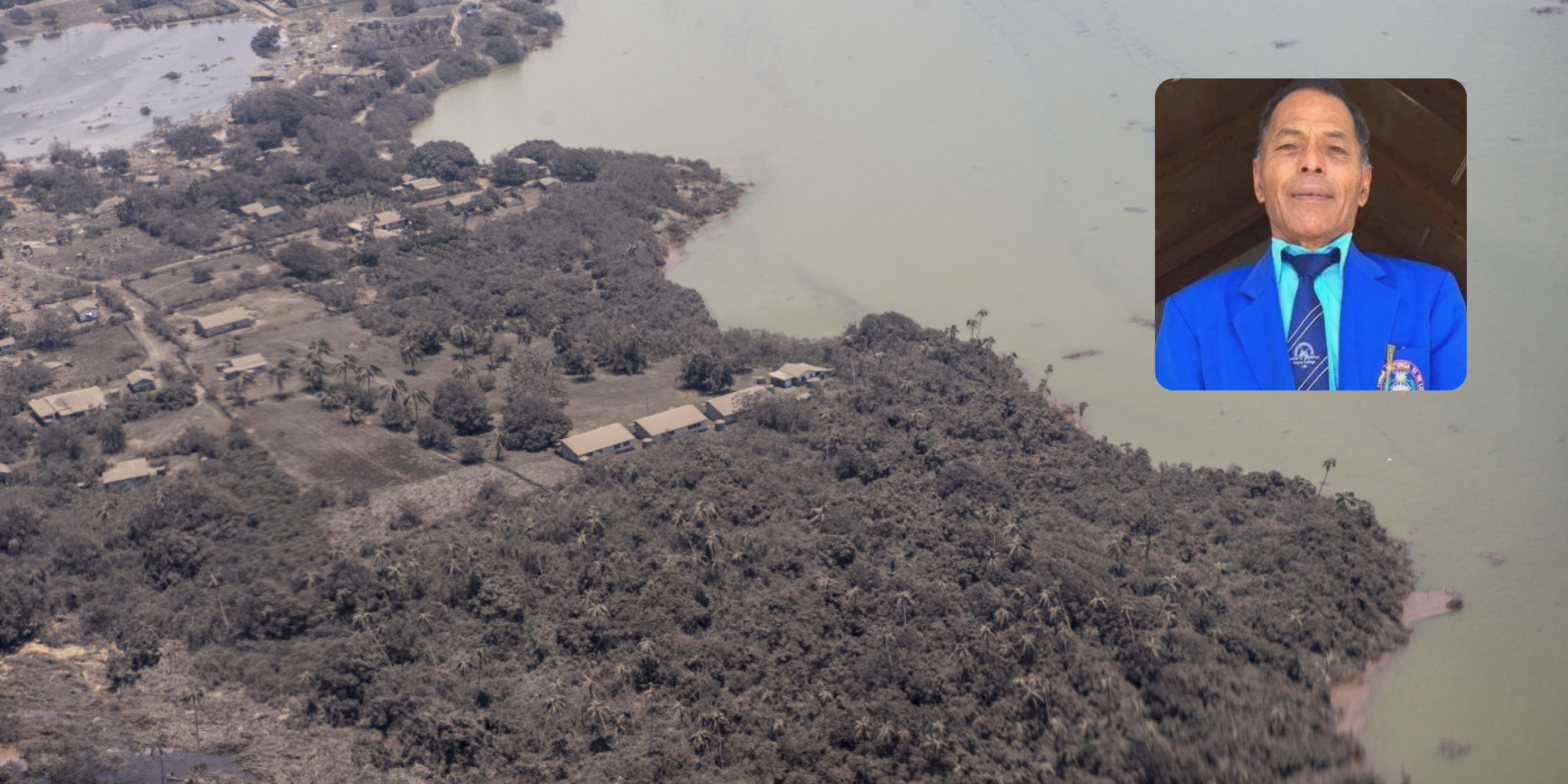As aid flight from New Zealand carrying humanitarian supplies arrived in Tonga, U.N spokesman says the most pressing humanitarian needs are safe water, food and non-food items
An aid flight from New Zealand carrying humanitarian supplies arrived in Tonga on Thursday, five days after the South Pacific island nation was hit by a volcanic eruption and tsunami that devastated communities and spoiled most of its drinking water.
A Royal New Zealand Air Force C-130 Hercules had landed in Tonga’s Fua’amotu International Airport, a defense spokesperson said, after a blanket of volcanic ash was finally cleared off the runway.
An Australian Globemaster military transport aircraft is also due to arrive.
“The aircraft is carrying humanitarian aid and disaster relief supplies, including water containers, kits for temporary shelters, generators, hygiene and family kits, and communications equipment,” New Zealand’s foreign minister, Nanaia Mahuta, said in a statement.
Australian Defense Minister Peter Dutton said its aircraft was loaded with supplies including water desalination equipment, shelter, kitchens, and a sweeper to help remove ash from the airport. A second Australian aircraft is due to make the flight on Thursday.
The delivery of the supplies is expected to be contactless to ensure Tonga remains free of the coronavirus.
The explosion of the Hunga Tonga-Hunga Ha’apai volcano on Saturday killed at least three people, sent tsunami waves rolling across the archipelago, damaging villages, resorts and many buildings and knocked out communications for the nation of about 105,000 people.
Rachael Moore, Australia’s high commissioner to Tonga, said the loss of property had been “catastrophic.”
“Along the western beaches there is a moonscape where once beautiful resorts and many, many homes stood,” Moore told Australian radio, adding that drinking water was “an extremely high priority.”
Telephone links between Tonga and the outside world were reconnected late on Wednesday, though restoring full internet services was likely to take a month or more, according to the owner of the archipelago’s sole subsea communications cable.
Speaking to Reuters from the capital, Nuku’alofa, journalist Marian Kupu said Tongans were cleaning up all the dust from the volcanic eruption but feared they may run out of drinking water.
“Each home has their own tanks of water supply but most of them are filled with dust so it’s not safe for drinking,” Kupu said.
She also said villages on the western side of Tonga were very badly hit.
“I won’t say we are expecting more deaths but as we are speaking the government is trying to fly to the other islands to check over them.”
Asked if there were enough food supplies, she said: “I can say maybe we can survive for the next few weeks but I’m not sure about water.”
New Zealand is sending two ships, one of which is carrying 250,000 litres of water and desalination equipment that will be able to produce 70,000 litres a day.
This ship is due to arrive on Friday, while the other is due in on Thursday and will check shipping channels and wharf approaches at Tonga’s port.
An Australian ship is due to set sail today.
Tongans abroad were frantically calling families back home to ensure they are safe.
“There’s a sigh of relief as we are able to communicate with our loved-ones,” said John Pulu, an Auckland-based Tongan television and radio personality.
“We are breathing and sleeping a little better.”
The United Nations said that about 84,000 people — more than 80% of the population — has been badly affected by the disaster.
“They have been affected through loss of houses, loss of communication, what we understand is the issue with the water,” U.N spokesman Stephane Dujarric told reporters.
The most pressing humanitarian needs are safe water, food and non-food items, he said.
“Water is really the biggest life‑saving issue.”
The Hunga Tonga-Hunga Ha’apai volcano erupted about 40 miles (65 km) from the Tongan capital with a blast heard 2,300 km (1,400 miles) away in New Zealand. Waves reaching up to 15 meters (49 feet) hit the outer Ha’apai island group, destroying all the houses on the island of Mango, as well as the west coast of Tonga’s main island, Tongatapu, where 56 houses were destroyed or seriously damaged, the prime minister’s office said.
This story was originally published at REUTERS on 20 January 2022, reposted via PACNEWS.




